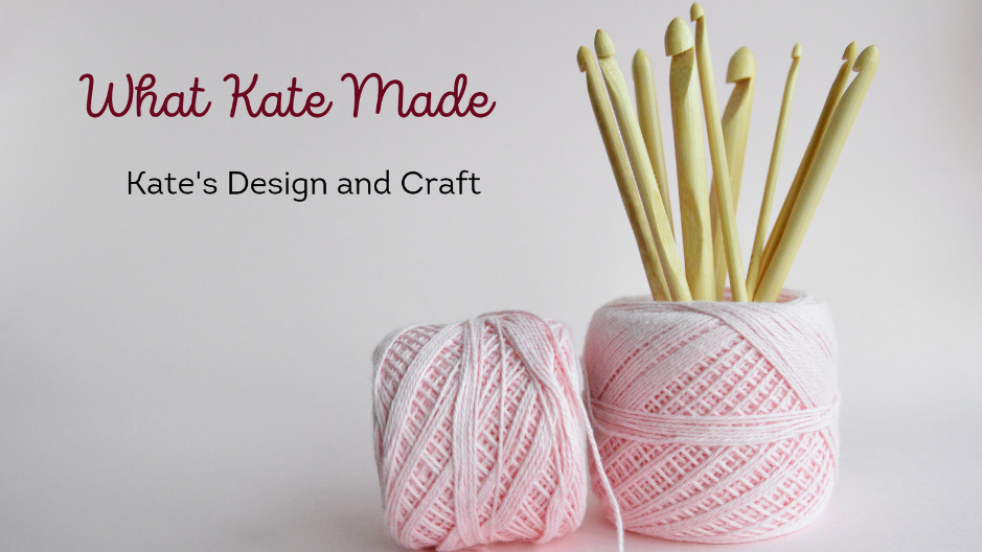-
A Crafting Community


I am so lucky with where I live. The little village of Elswick in Lancashire is a truly creative community with a thriving arts and craft culture.
It boasts a craft club and an arts club, a choir, a village garden group and they all collaborate on making our village a vibrant and beautiful place to live.
The Elswick in Bloom group do a fantastic job of making the public planting spaces a riot of colour, unusual planting structures and a joy of scents.
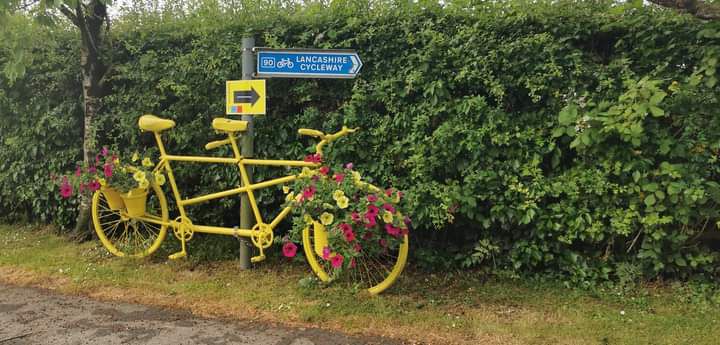
The Elswick Singers are a long established group and hold concerts twice a year in the Village Hall.

The Crafty Ladies club meets once a week to create and collaborate on a real mix of projects, currently producing Boomerang Bags. All meetings accompanied by tea and biscuits of course!
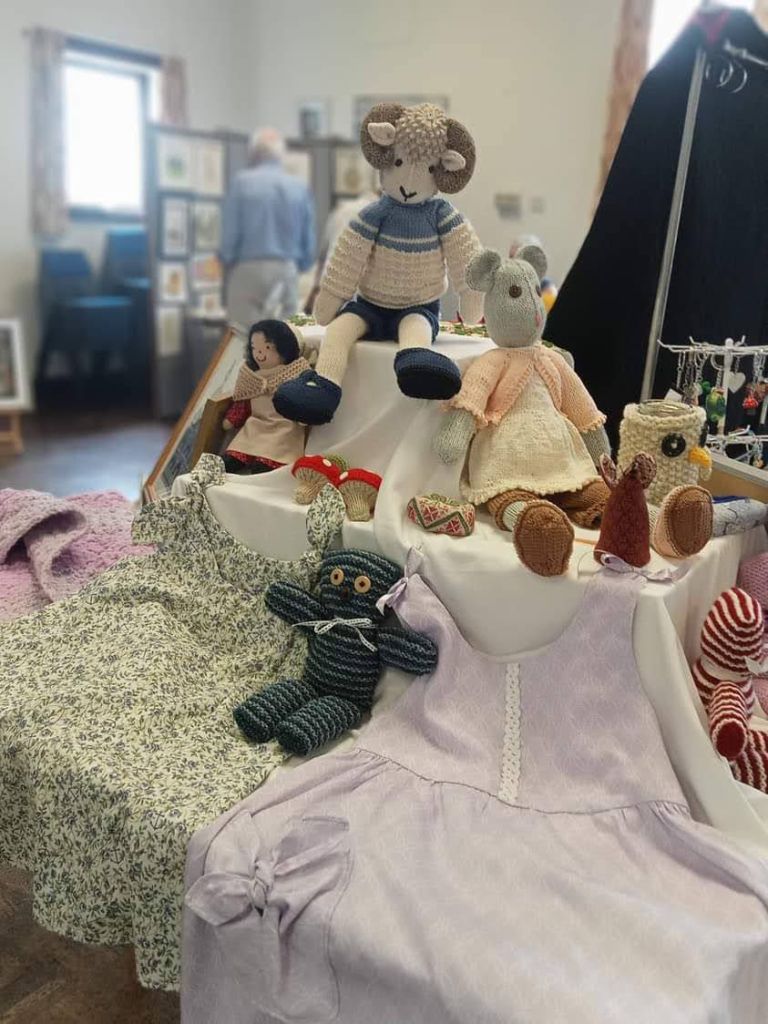
Elswick Community Arts Group is a fairly new venture, growing from the success of the first Art and Craft Exhibition in the Village Hall last year. Their aim is to encourage all ages to take up an artistic pursuit and to help people develop their skills. They also want to involve everyone in community Art projects.
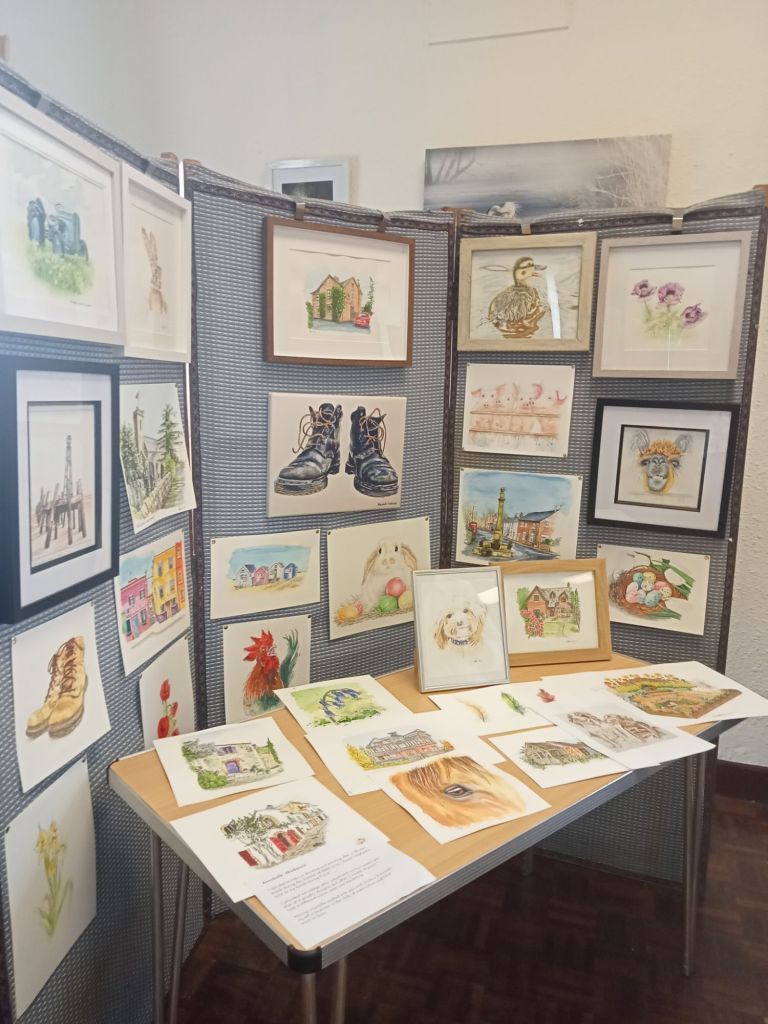
We also have a group of crocheters and knitters who regularly decorate the village with their projects. From postbox toppers to a granny square Christmas tree, the village is yarn bombed on a regular basis.
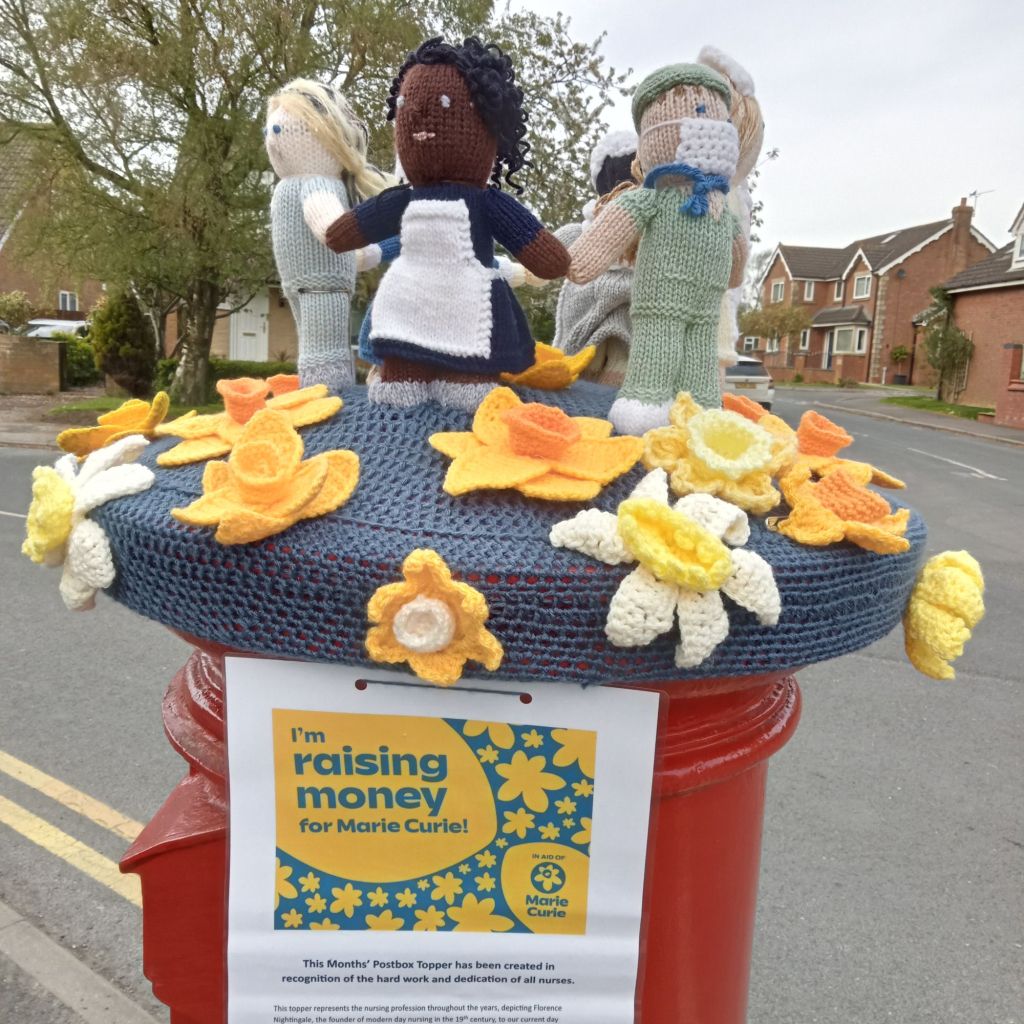
And the best of all…all these groups work together, making our village into the vibrant, creative place that it is.
-
Crochet Abroad
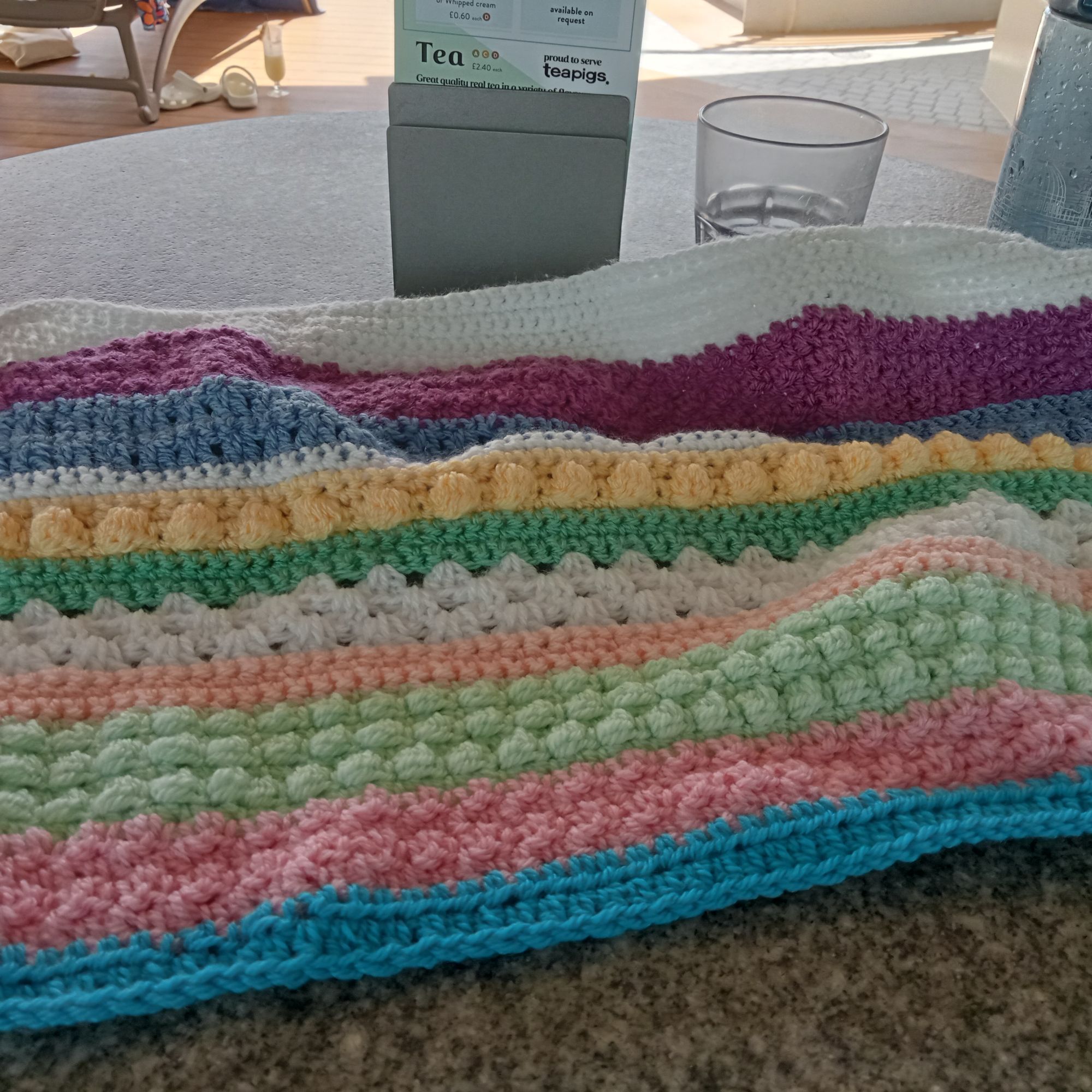
I’ve just returned from a 2 week cruise of the Mediterranean. Yes, I know showing off but what I wanted to tell you is how popular crochet is in Europe. I spotted it all over the place.
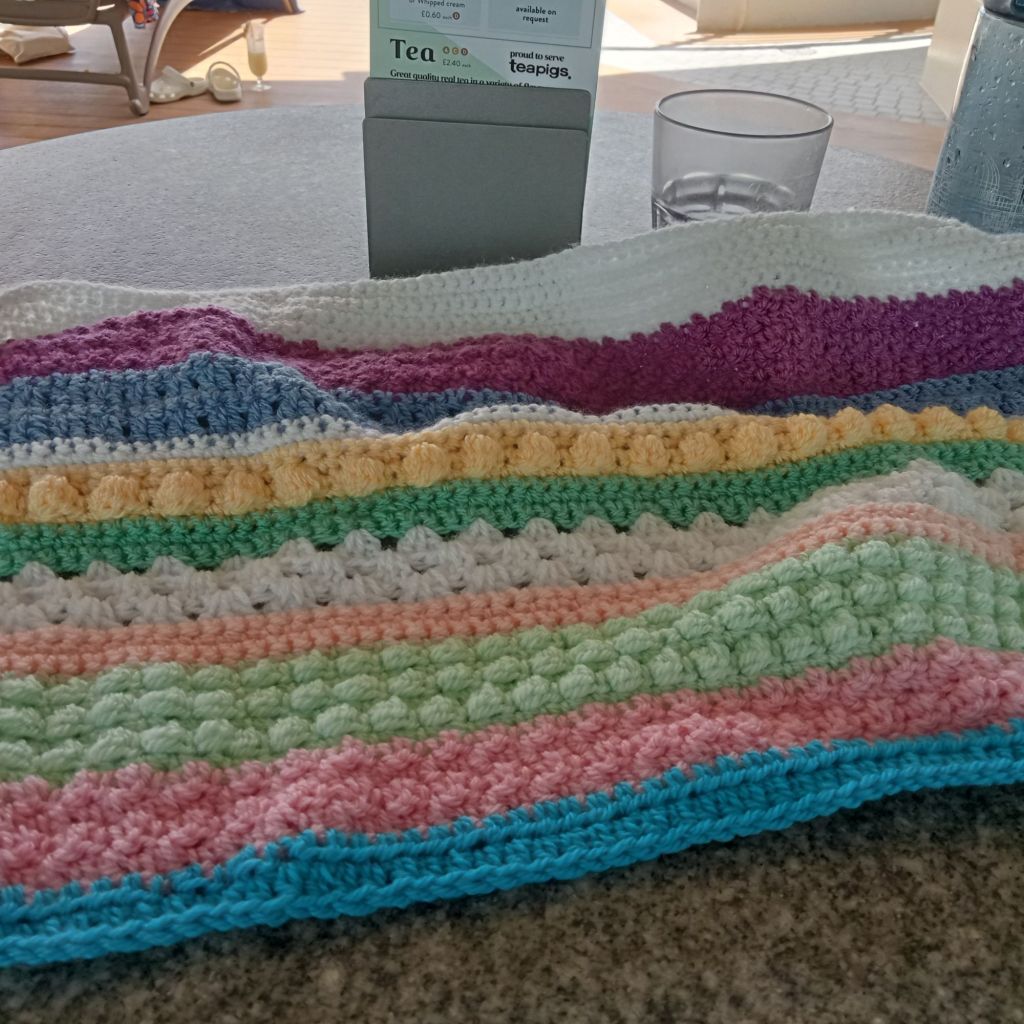
I took my crochet with me and worked on it on sea days. Several other passengers came over to introduce themselves and ask what I was making. I’d taken a blanket project which is made up of bands of different colours and stitches, which provoked lots of comments.
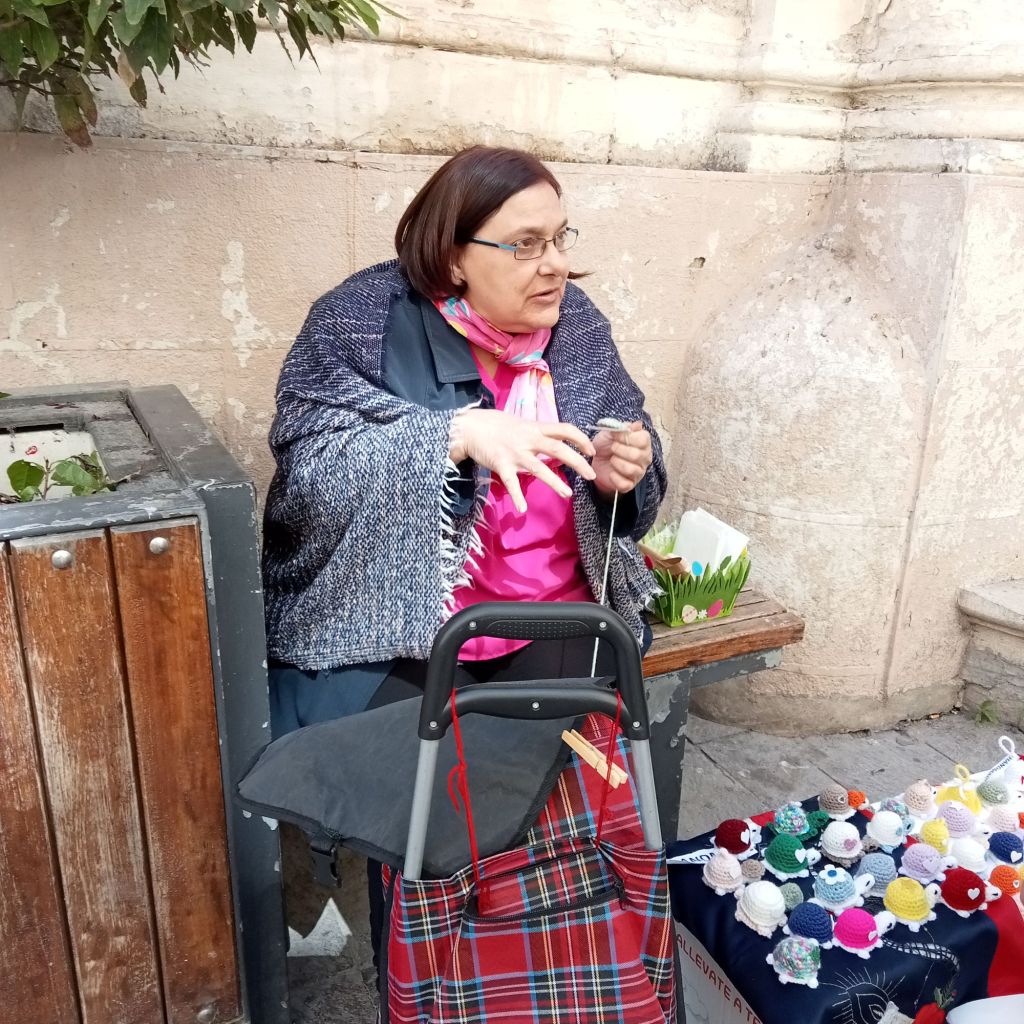
I had a lovely chat with this lady in Valetta, Malta. She was making and selling Amigurumi on the street. She spent ages chatting to myself and another lady, we even got out our phones and showed each other photos of our work.
When we reached Kusadassi in Turkey on a Sunday, there was a craft market on the Quay. Lots of crochet for sale there, amigurumi and bags being most popular.

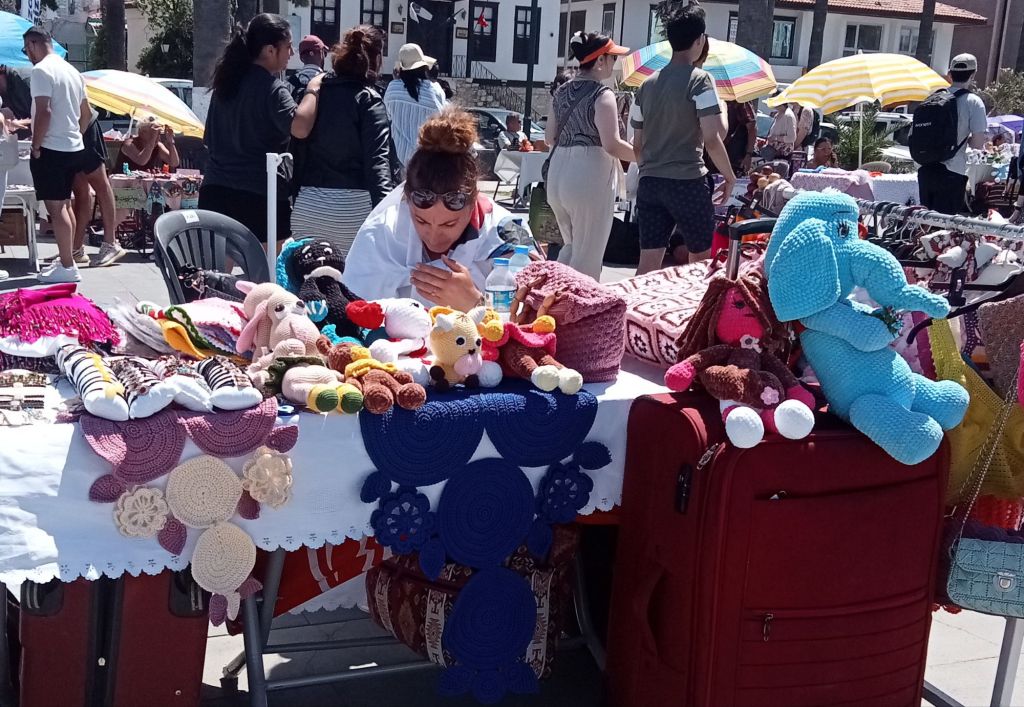
Onto Rhodes Old Town, and in among the tourist shops a great range of crocheted bags and Plushies, toys made from chenille yarn.
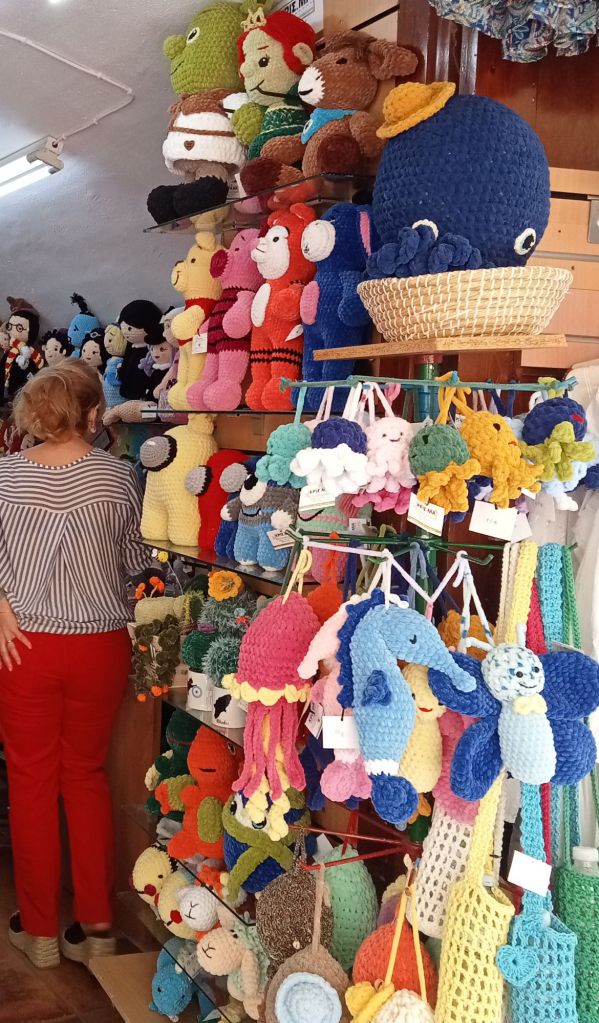
Crochet can only be made by hand, although there are some machine made fabrics that look like crochet but aren’t. The question is , do you buy from shops? You have to think about who is making these cheap crochet items. Almost certainly they are being made by cheap labour somewhere in the third world. Those crochet items that you see at craft events that look expensive compared to what you buy from those Chinese websites, there is a reason for that. Lots of hours go into making them, so think before buying about the person who has made them.
-
Holiday Crafting


I always take something crafty on holiday, usually my crochet but this time I’m trying my hand at sketching too.
I am not good at drawing but encouraged by my fellow Elswick Community Arts group members I’m having a go.
Trieste is the perfect place to start, there is wonderful architecture here. So, I’ve taken photos and now, back on board, I’m going to try sketching some of the buildings we saw.
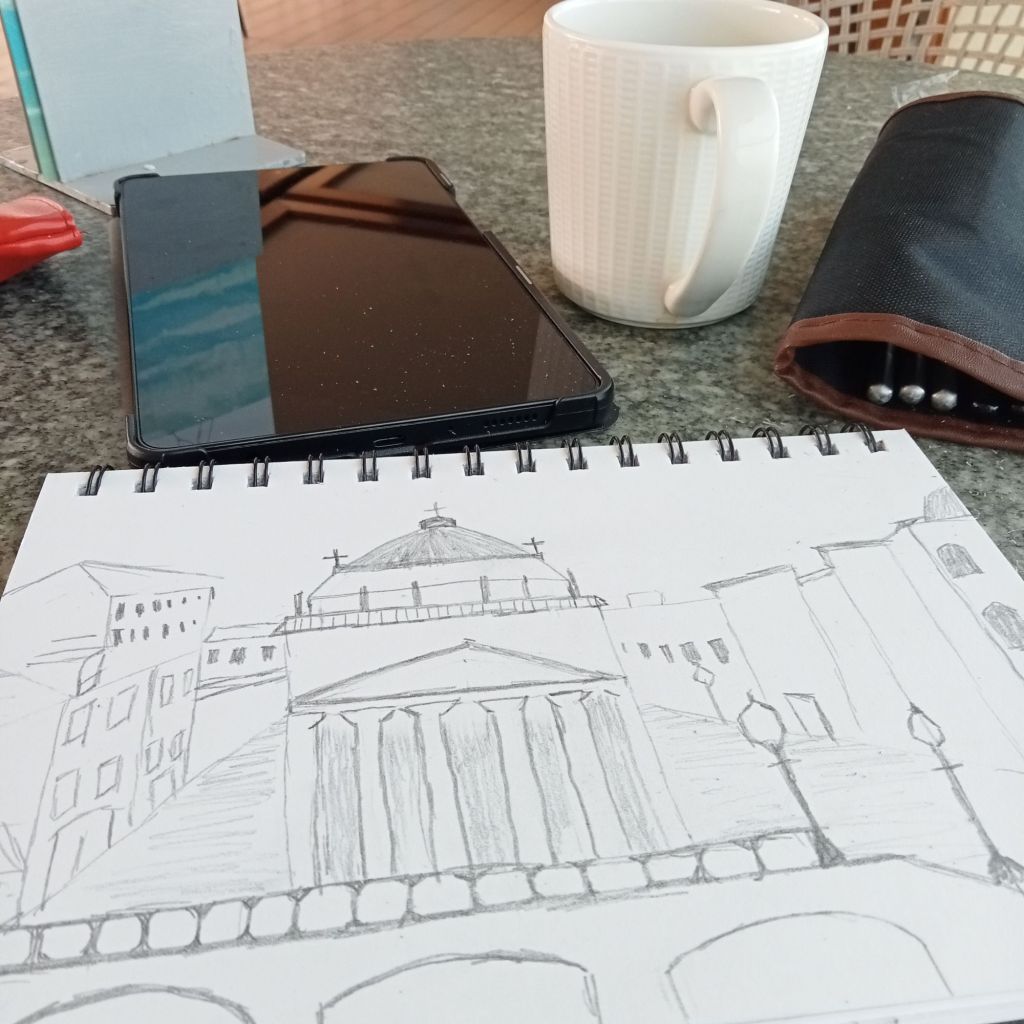
-
Pom-pom Bunnies
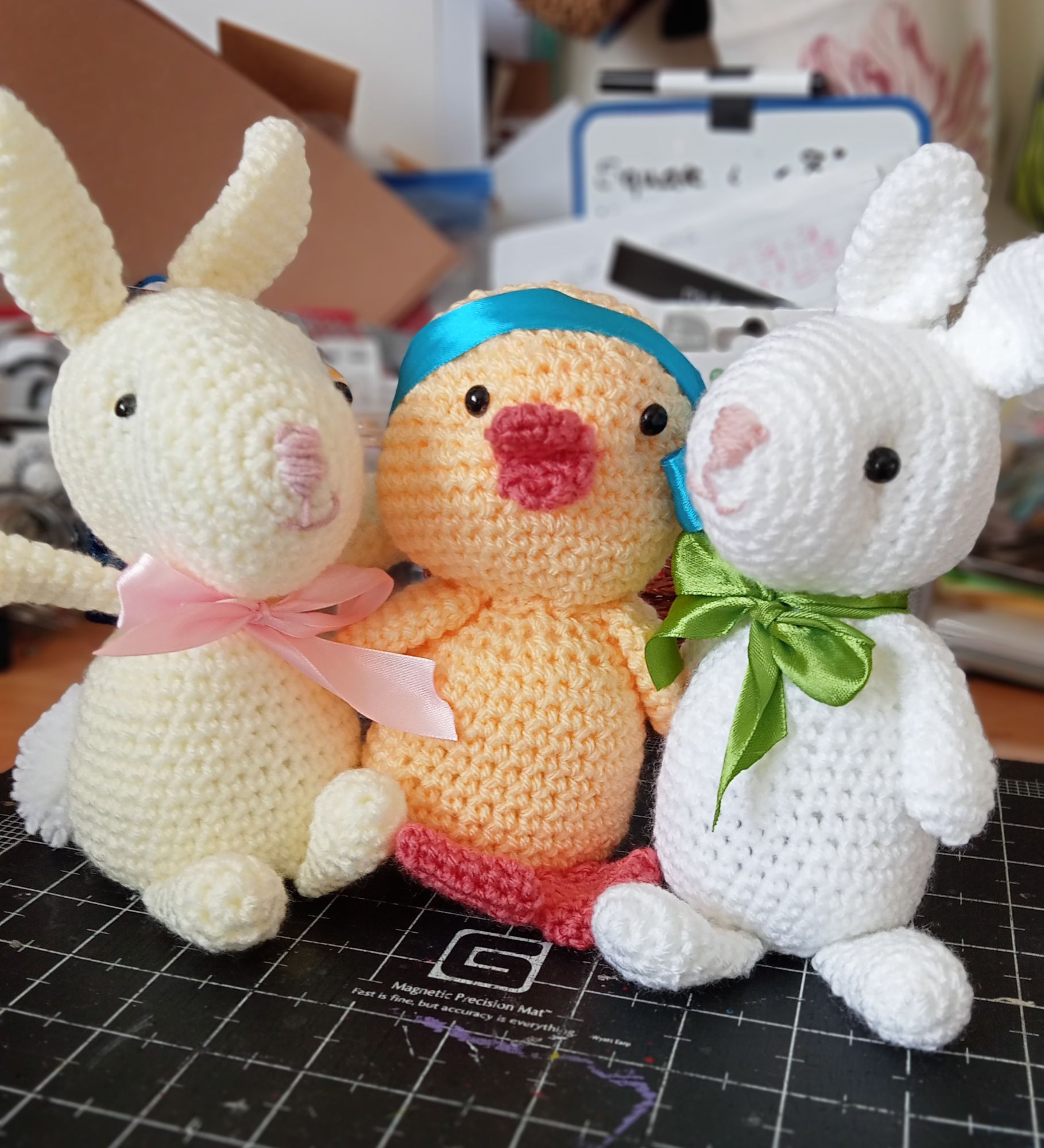
This is my session from the Virtual Village Hall today.
https://www.facebook.com/share/v/sF9KWfDwUaETraum/
I’ve been making lots of different bunnies for Easter and here is my crochet pattern for the small bunny.
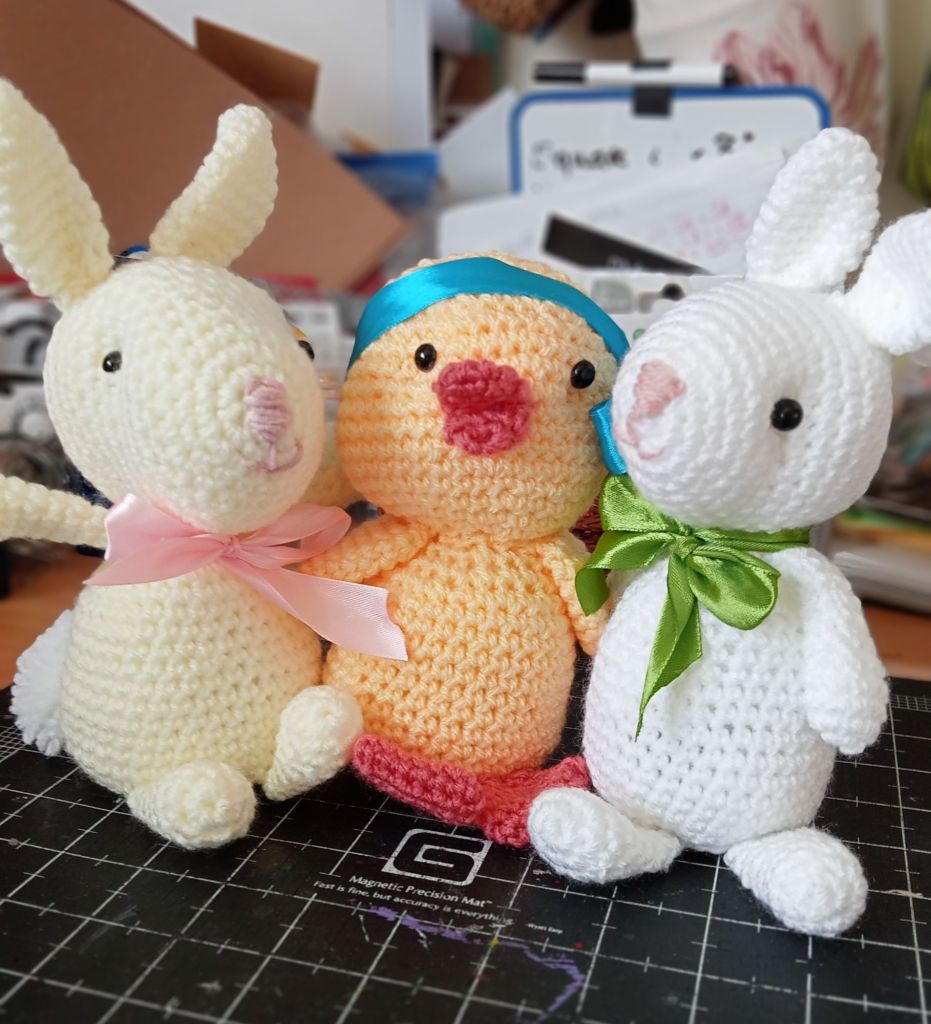
Small Rabbit
Materials
DK yarn 50g
3mm hook
Safety eyes
Fibre fill
Black embroidery thread
Abbreviations
MR Magic ring
Ch chain
Dec double crochet
Ss slip stitch
Inc. Increase
Dec decrease
BLO Back loop only
FLO Front loop only
Pattern
Body
MR 6 DC into ring
Inc 6 times (12)
(1dc, Inc) 6 times (18)
(2dc , Inc) 6 times. (24)
(3dc , Inc) 6 times (30)
BLO (2 DC, Inc 2dc) 6 times (36)
Next 6 rounds 36 DC
(Dec, 4 DC) 3 times, Dec, 16 DC (32)
Next 2 rounds 32 DC
(Dec, 3sc) 3 times, Dec, 15 DC (28)
Next 2 rounds 28 DC
Stuff
(Dec, 2dc) 3 times, Dec 14 DC (24)
Next 2 rounds straight
(2 dc, Dec) 6 times (18)
FO leaving long tail.
Head
MR 6dc into ring
Inc 6 times (12)
(1dc, Inc) 6 times (18)
Work 1 round 18 dc
(2dc, Inc) 6 times (24)
Work 1 round 24 DC
(3 dc, Inc) 6 times (30)
Work 1 round 30 DC
(4dc, Inc) 6 times (36)
7 rounds 36 DC
Insert safety eyes between rounds 9 and 10
(Dec, 4 DC) 6 times (30)
(Dec, 3dc) 6 times (24)
Stuff
(Dec , 2 DC) 6 times (18)
(Dec, 1 DC) 6 times. (12)
Dec 6 timesc
FO and close
Ears make 2
MR 4 DC in ring
(1 DC , Inc) 2 times (6)
(1dc, Inc ) 3 times (9)
9 DC
(2 DC, Inc) 3 times (12)
5 rounds 12 dc
(5 dc, Dec) 3 times (10)
FO leave long tail
Arms make 2
MR, 6 DC in ring
Inc 6 times (12)
Work 2 rounds 12 DC
(2dc, Dec) 4 times (8)
Work 6 rounds 8dc
FO leave long tail
Legs make 2
MR 6 DC into ring
Inc 6 times (12)
Work 6 rounds
(2dc, Dec) 4 times
FO leaving long tail
Flatten arms and legs, Sew arms and legs to body. Flatten ears, Sew ears to head. Sew head to body. Sew nose and mouth using black embroidery thread -
March is Crochet Month UK
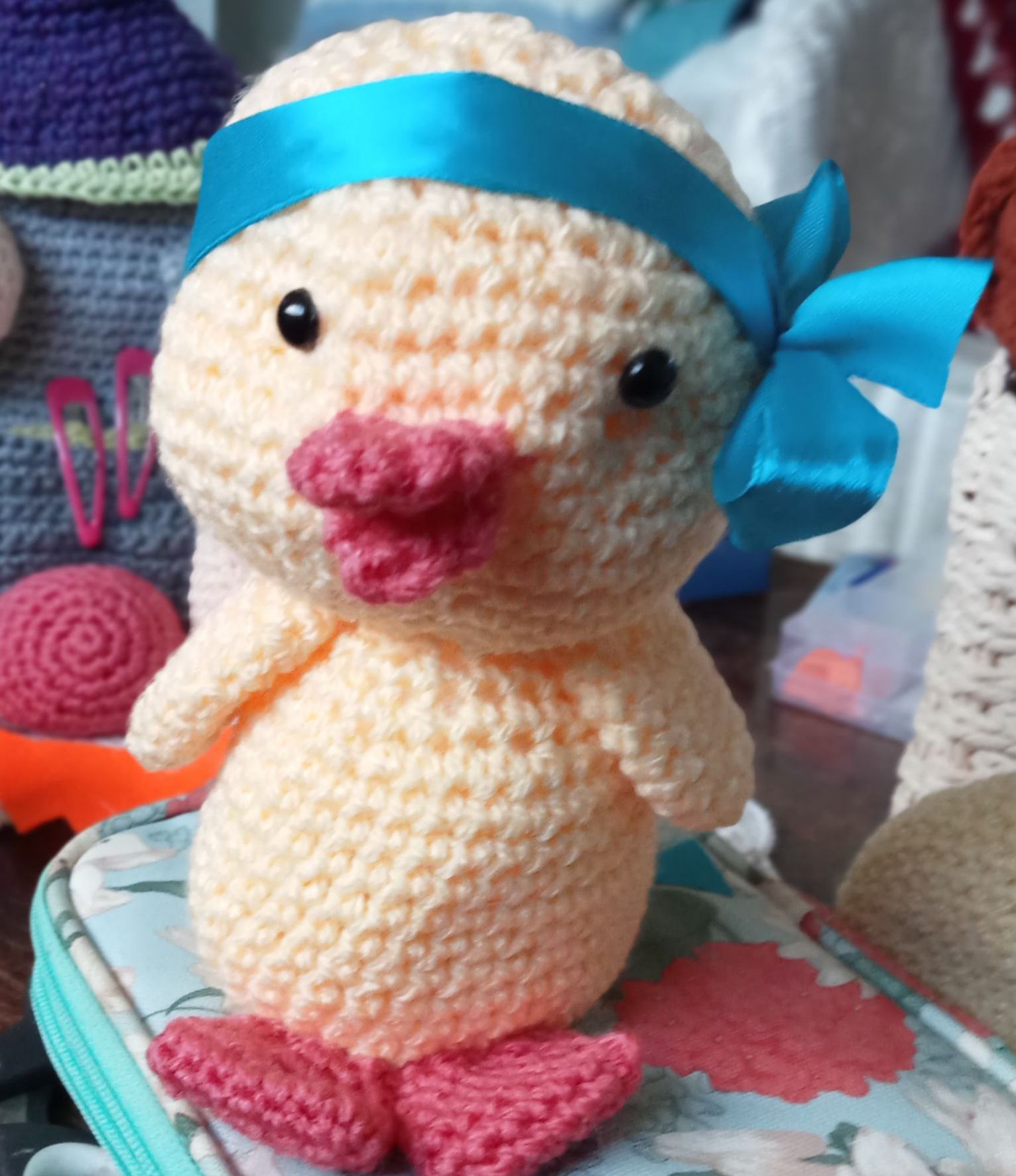
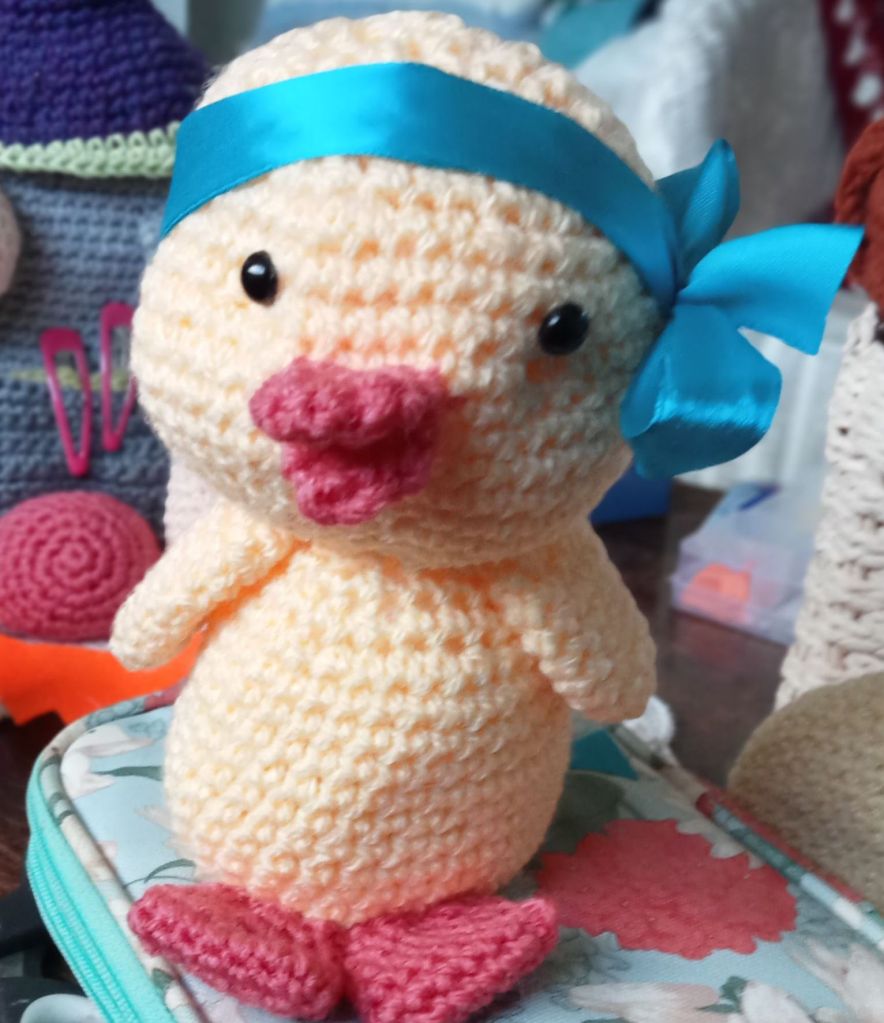
Crochet Easter Chick National Crochet Month is celebrated in March every year. This is a month to interlock loops of yarn or wool and make beautiful pieces to use yourself or give to friends and family members. Crocheting is often confused with knitting, but the differences between the two crafts are quite clear. In crocheting, you complete every stitch before moving on to the next one.
The earliest remains of knitted clothing date back to the 11th century A.D., but it is thought that the skill of making clothes out of cotton and yarn dates back to the earliest of times. The first details of crocheting emerged in the Dutch magazine “Penelope” in 1823, with an exhibit of then-stylish purses crocheted with silk thread. By the 1840s, many books were discussing crochet. The Scottish were among the first in the English Isles to adopt this new method of knitting, and soon local people’s preference changed from conventional stitching to crocheting.Crochet needles were given the name ‘shepherds’ hooks’ and different materials — such as steel, ivory, and boxwood — were used to make them. Today’s crochet hooks are generally either aluminium or plastic, and you can get a wide variety of styles. Acrylic yarn is hard-wearing and easy care for garments, but nothing beats pure wool for feel and look, as long as you don’t shrink it in the wash!
The big yarn manufacturers often have free patterns to download, so take a look at some of these links and make yourself something nice. -
Easter Bunnies
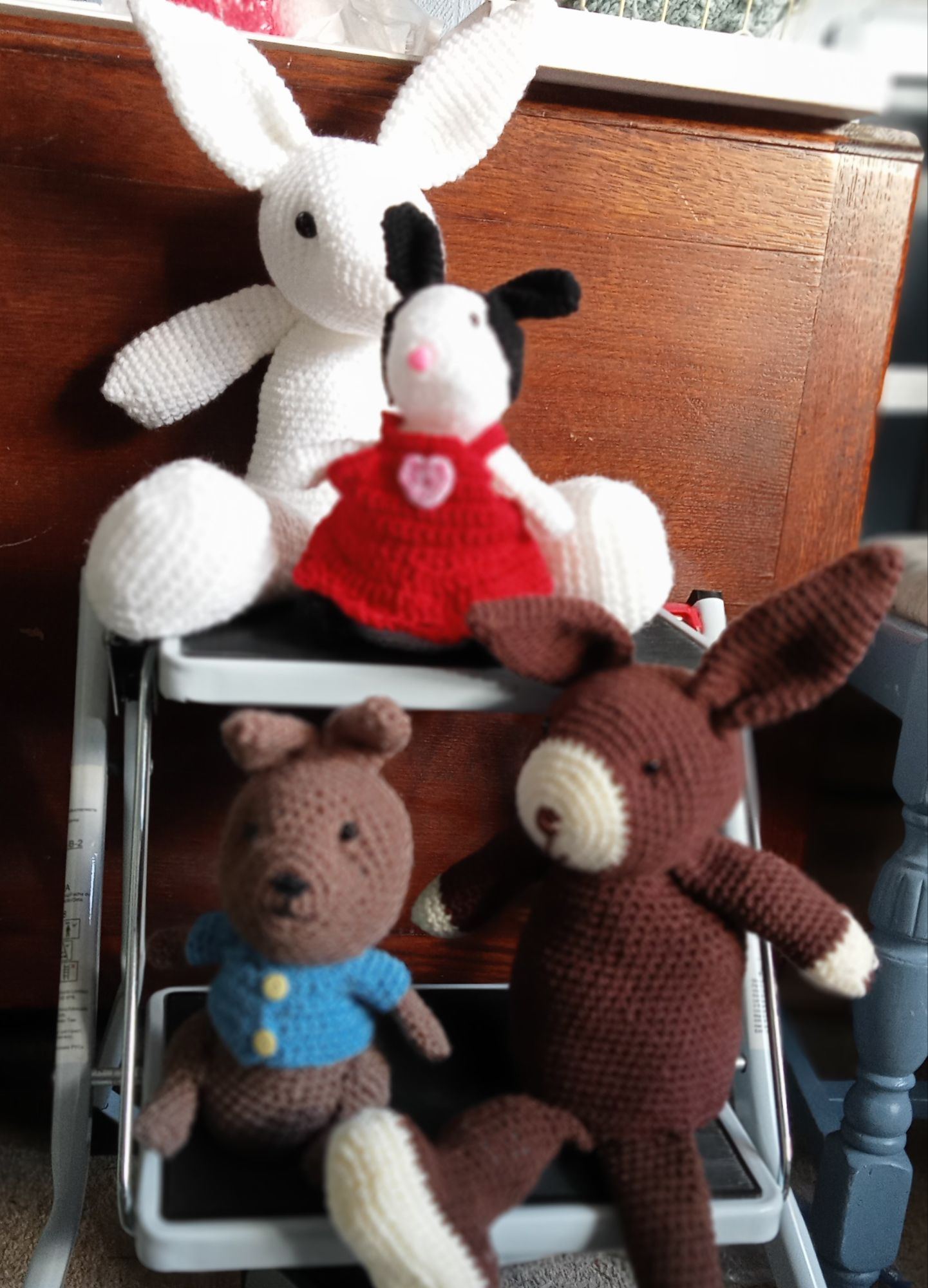

I’m ramping up production of bunnies in the work room at the moment. I’ve got a stall at the Village Hall Spring Gift Fair and I’ve decided to make Bunnies and maybe a few chicks.
I have 3 favourite rabbit patterns and Im making several of each. The biggest is Millie Rabbit, I’ve made lots of these, including a ballerina version. The medium sized bunny is Benji, and the smallest is Minnie Bunny. I’m making them in lots of colours and giving them all little accessories – jackets, dresses , flowers and Easter eggs.

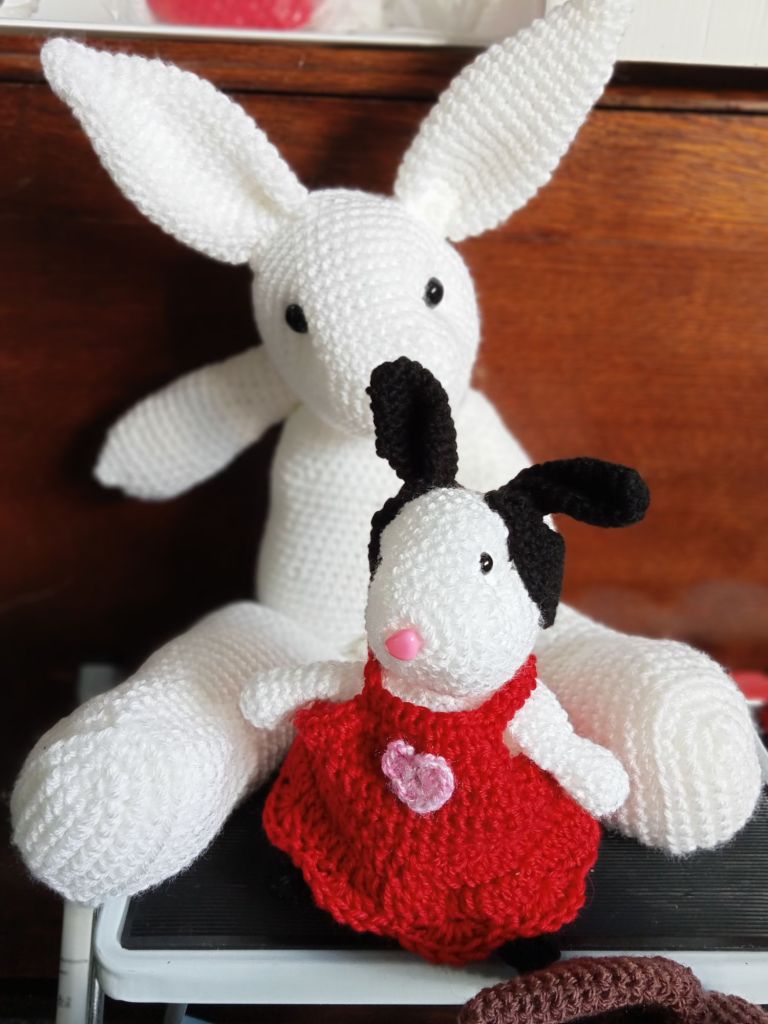
The origin of the Easter Bunny goes back to North America. The idea of an egg-giving hare went to the U.S. in the 18th century. Protestant German immigrants in the Pennsylvania Dutch area told their children about the “Osterhase” . Hase means “hare”, not rabbit, and in Northwest European folklore the “Easter Bunny” indeed is a hare. According to the legend, only good children received gifts of coloured eggs in the nests that they made in their caps and bonnets before Easter.
These bunnies make a great Easter present, packaged together with a chocolate egg.
-
All of my heart
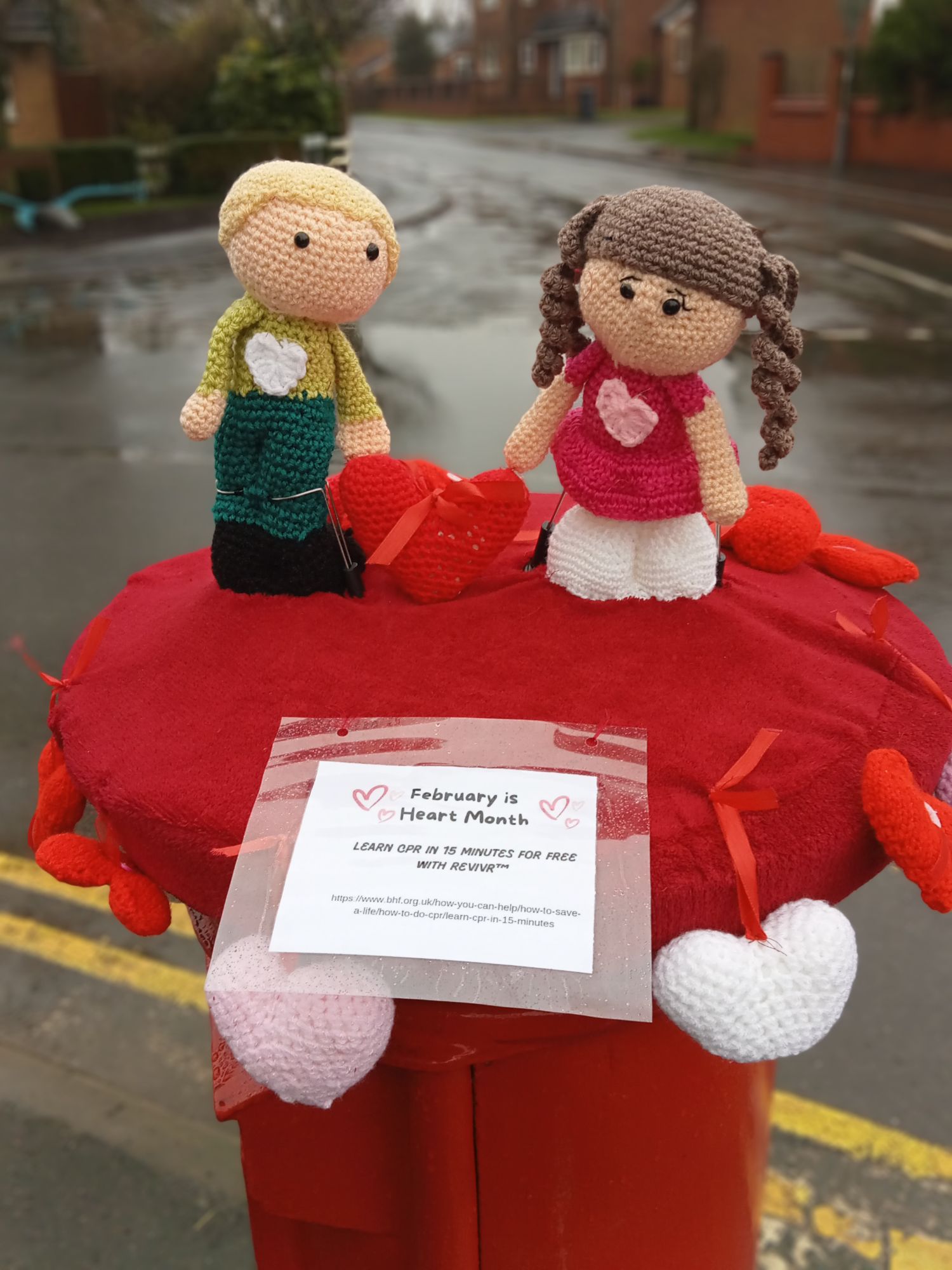
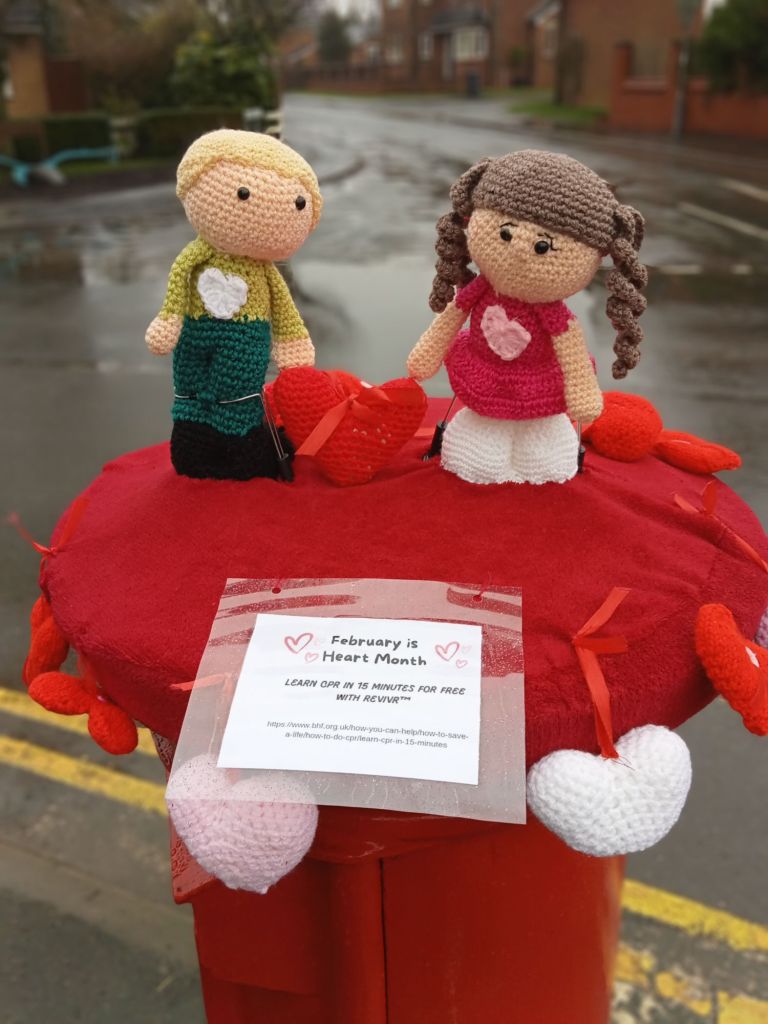
Did you know that February is national heart month? To celebrate this and encourage awareness, the Elswick Crochet Crew have created a post box topper with the dual purpose of celebrating Valentines Day and Heart Month.
If you take a look at the British Heart Foundation’s website you will see lots of ways to help raise money and awareness and increase your knowledge of how too look after your heart and others. They have an online CPR course that takes just 15 minutes and could be a lifesaver.
Our post-box topper features lots of knitted and crochet hearts. A heart is not just for Valentines Day, lots of hospitals give them to patients and their loved ones as a way of keeping a bond while people are in-patients.
If you would like to make a heart, here’s a simple pattern.
Crochet Heart
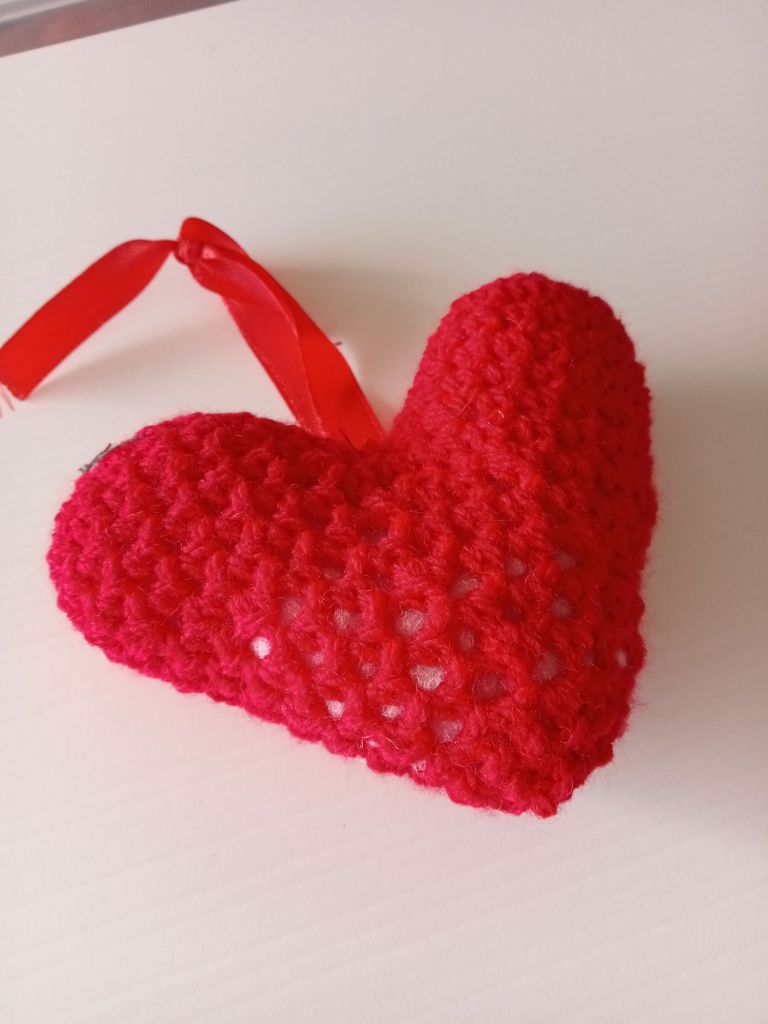
Materials
- Dk Yarn
- crochet hook 2.5 mm
- polyester fiberfill
- darning needle
Stitches and abbreviations :
Sl st Slip stitch,
Ch chain
Dc double crochet ,
Rep repeat
St(s) stitches
Work in continuous rounds.
Use a stitch marker and place it in the first stitch of the round to mark the beginning of it.
PATTERN
1: Work 6 dc in a magic ring [6]
2: Work 2 dc in each st around [12]
3: (Dc in next st, 2 dc in next st) rep 6 times [18]
4-5: Dc in each st around
Cut the yarn leaving a short tail for sewing. Make another piece just like the previous one by repeating rounds 1-5. Do not cut the yarn as we will continue using the yarn of the second piece.
6: Crochet the pieces together. Work 9 dc on the second piece, 18 dc around the first piece and again 9 dc on the second piece [36]. Sew the hole between the two pieces closed.
7: Dc in each st around
8: (Dc in each of next 4 sts, dc2tog) rep 6 times [30]
9: Dc in each st around
10: (Dc in each of next 3 sts, dc2tog) rep 6 times [24]
11: Dc in each st around
12: (Dc in each of next 2 sts, dc2tog) rep 6 times [18]
13: Dc in each st around
Fill the heart with fiberfill. Add a bit of stuffing after the next rounds as well.
14: (Dc in next st, dc2tog) rep 6 times [12]
15: Dc in each st around
16: (Dc2tog) rep 6 times
Cut the yarn leaving a tail for closing the piece. Weave the threaded needle through the front loops of all remaining stitches and pull tightly to close.
-
Try Something New
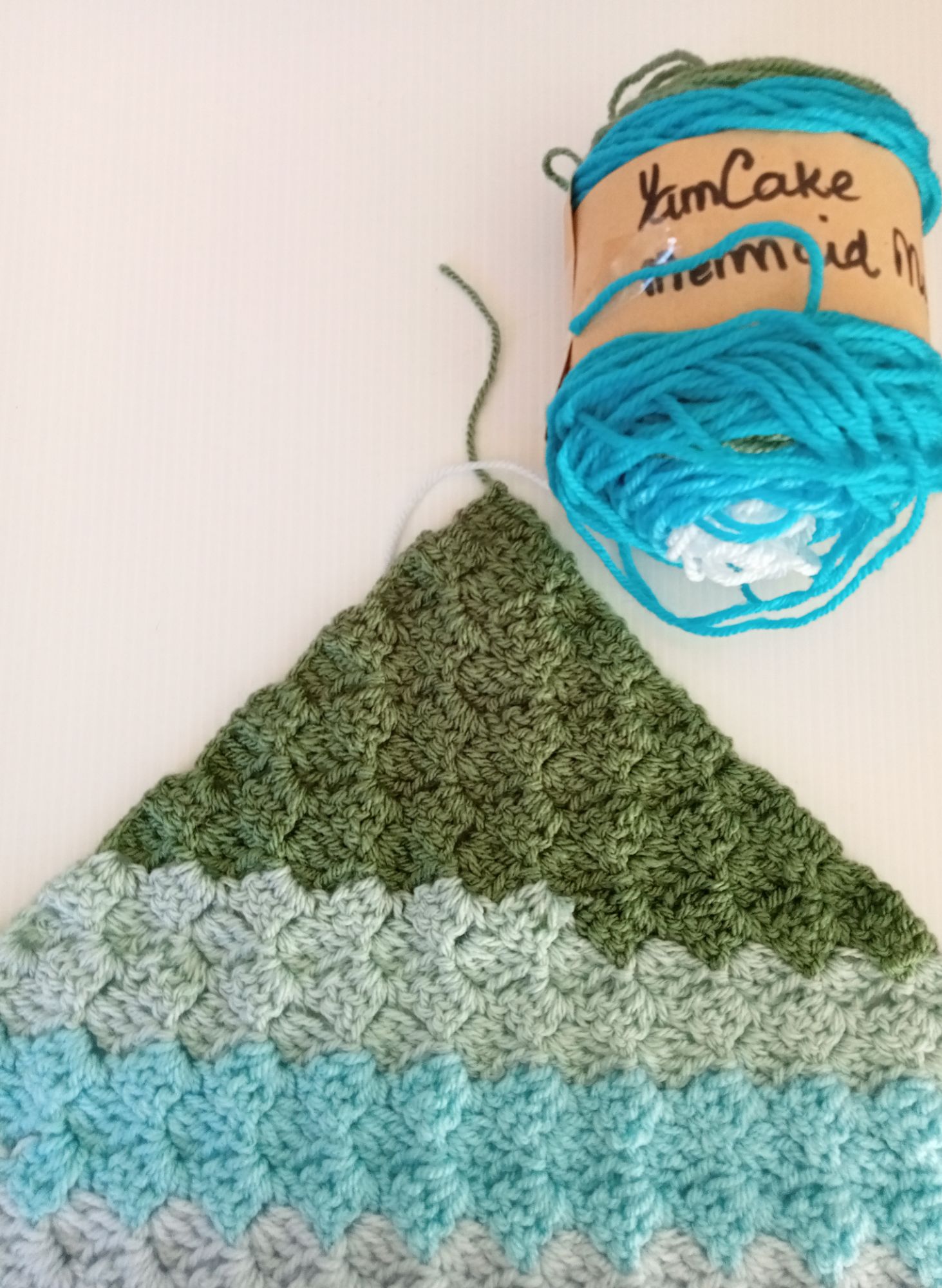
Trying something new
Ive been crocheting for a long time, more years than i care to remember but even an old dog like me can learn something new occasionally.
I’ve been having a go at corner-to-corner (C2C) crochet, and I love it. If you do not know what it is, it is a way of working to create shapes by working corner to corner, literally! I decided to give it a go because I wanted to create a blanket from the yarn cakes I have made from odd ends of yarn.
Variegated yarns do not always work well in crochet because of the different size of the stitches. As the lengths of colour in my yarn cakes are quite long, this is the ideal pattern to use as you get broad blocks of colour.
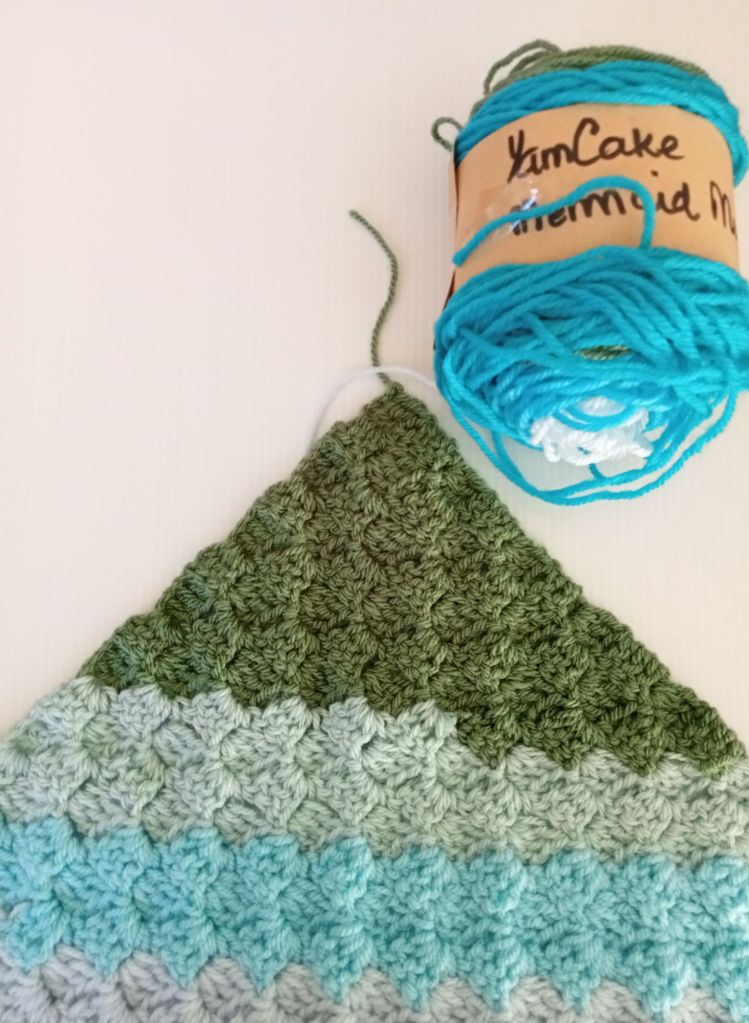
My own yarn cake and my C2C blanket So, having decided to give C2C a go, I opened Pinterest to look for a tutorial. Now, normally I can follow a written pattern quite easily but even with pictures, I could not get this! Next stop YouTube, so much easier following while someone else did it.
I am an experienced crocheter and can pick up most things quite easily. I have just started teaching a beginner’s class for people brand new to crochet and those who have tried in the past. The first thing I tell them is to use every resource available when you are learning, including your classmates as they all learn at different rates and can help each other out.
I always think a day is not wasted if you learn something new and you are never too old to learn.
-
WIPs and chains
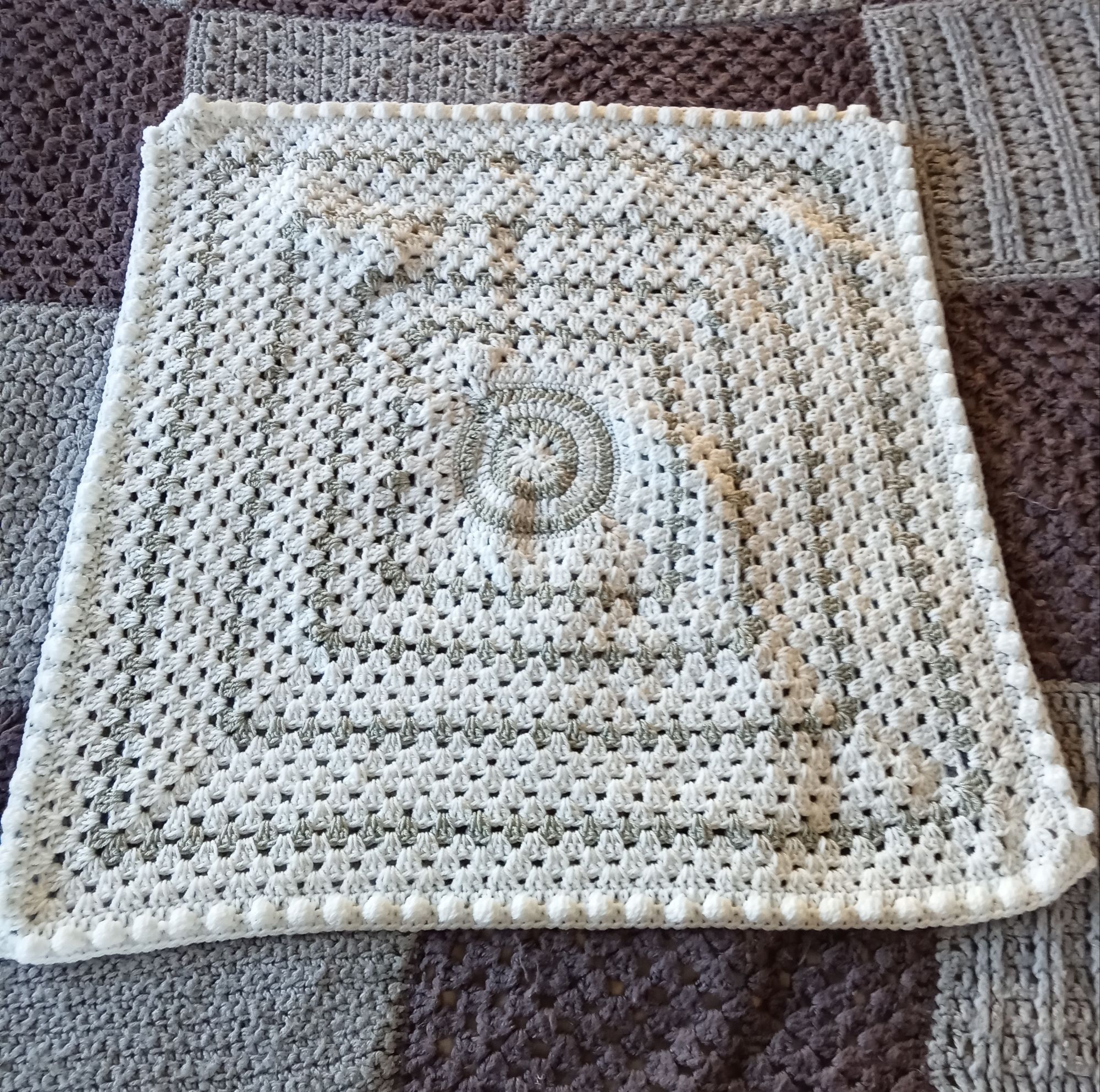
Hookers do it with WIPs and chains! We’ve all laughed at phrases like that but a serious crocheter always has WIPs, works in progress. January is a great time to go through your project and decide what to keep.
As I’ve said before, January is my time to make things for me and this quite often means finishing things. I’m working on a baby blanket for my friend’s first grandchild. I started it on holiday in September and the baby is due soon!
Spurred on by the deadline, I got the project out to take a look and didn’t like what I saw. The pattern was heavy and way too big. So, it got pulled back and I’m remaking it.
I found this lovely free pattern and decided to make it. I got quite a bit worked up, then decided it’s way to fancy for a baby, too many holes for little fingers to get stuck in. So, once again frogged it
In the end, I opted for a simple granny square, with a circle at the centre. And I have yarn left for some little accessories.
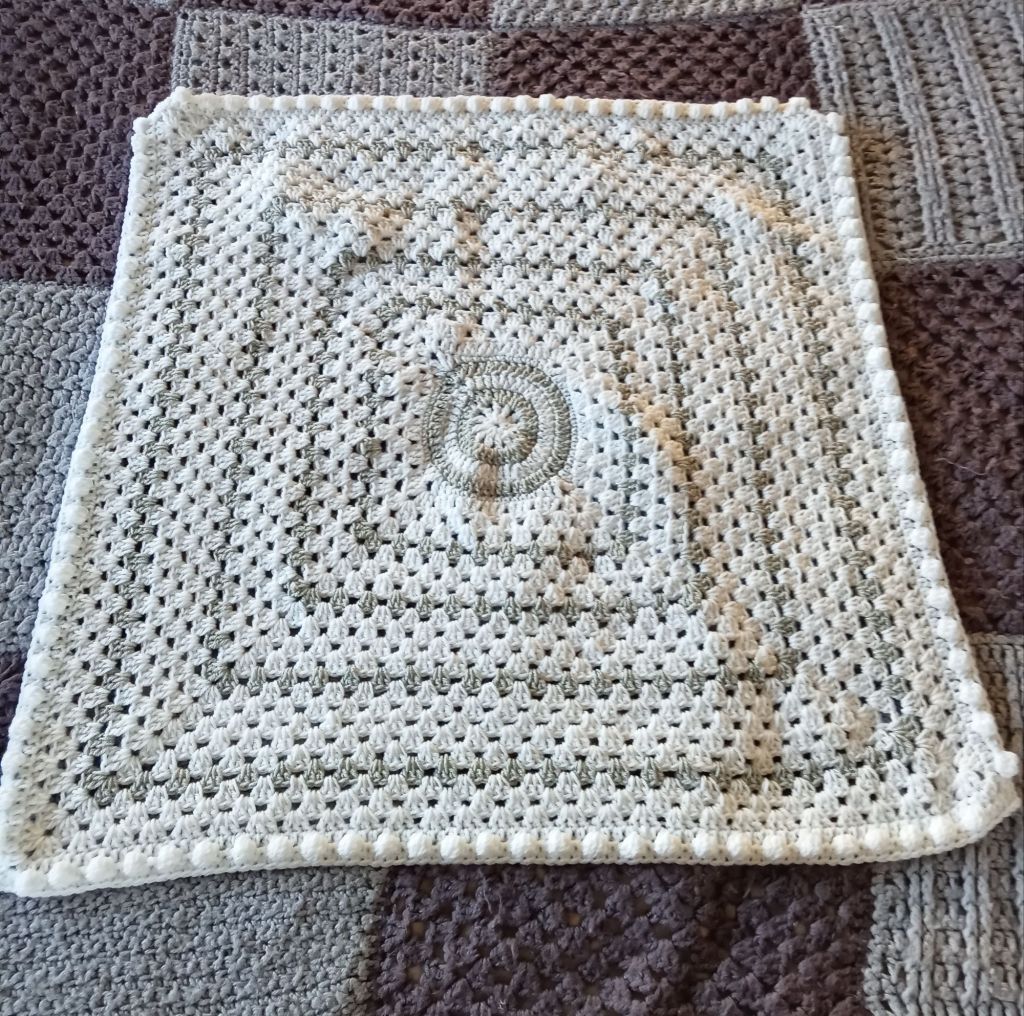
I’m sure mum-to-be will love this.
Don’t be afraid to pull something back if you don’t like it. It’s not a waste of time, just getting it right.
-
Time to take stock…
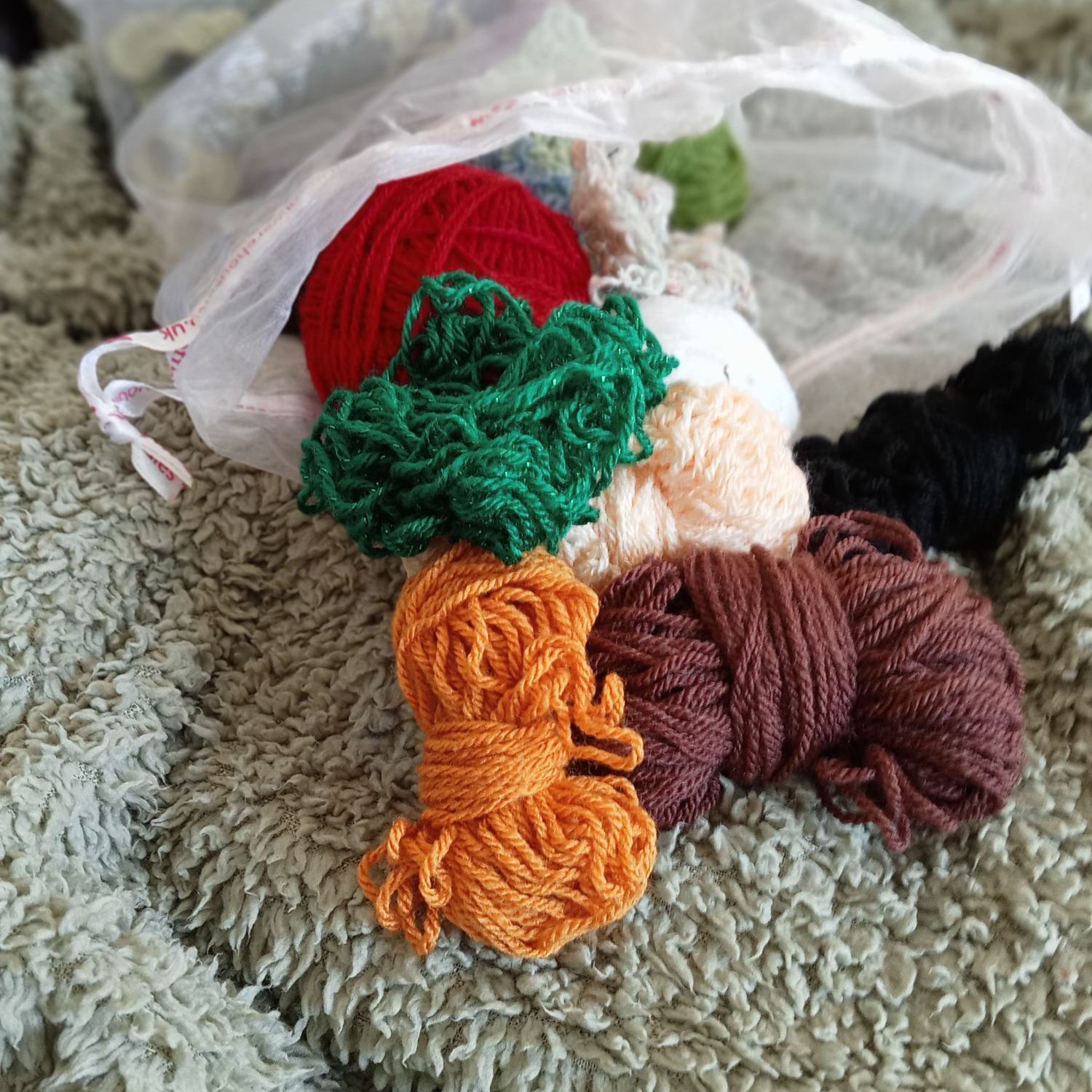
January for me is a time to take stock, both literally and figuratively. As this is my quiet time, I go through all my WIPs and decide what I’m going to finish and what I’m going to frog.
When my Nana taught me to crochet, more years ago than I like to think about, she got all her wool from pulling back hand knitted garments she sourced at jumble sales. That is virtually impossible now as handmade garments are rare to find and much cherished. But using up all your short ends of yarn and frogging things you don’t love are a great source of new yarn.

The rise in popularity of yarn cakes, self-striping colours in a flat ‘cake’, has also sparked a new trend of making your own cakes. Gather together all your bits of yarn, sort them by weight, then by colours. Use a knotless join, then wind them into a ball. You can get mechanical ball winders that produce a flat cake.
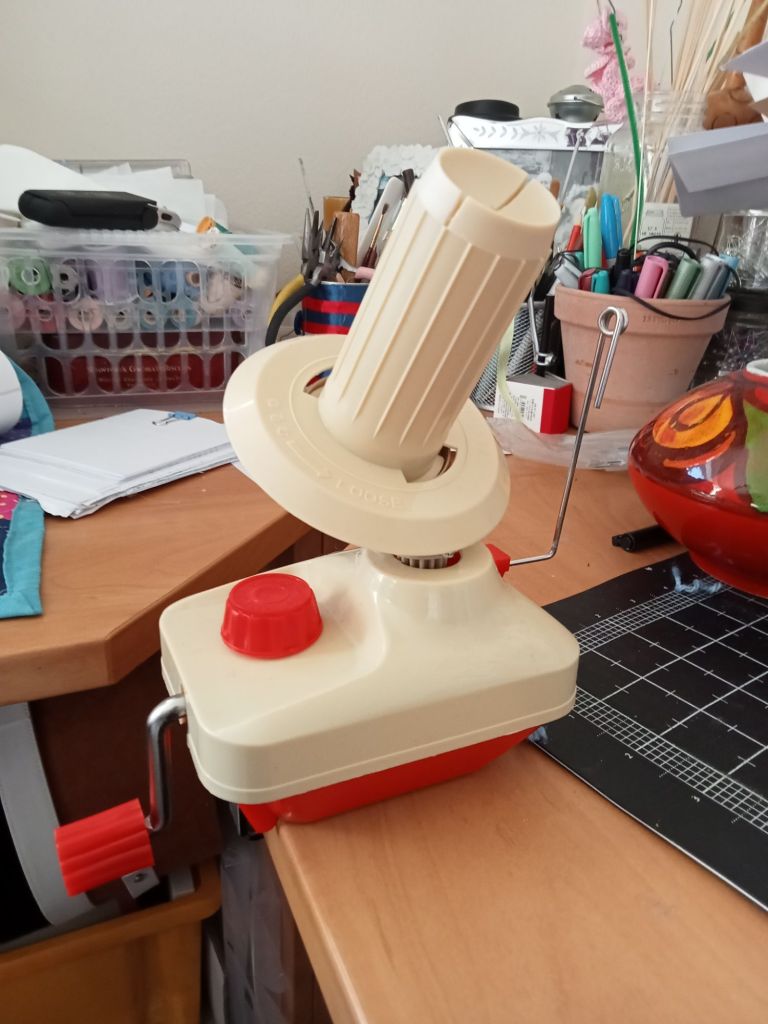
Ball winder 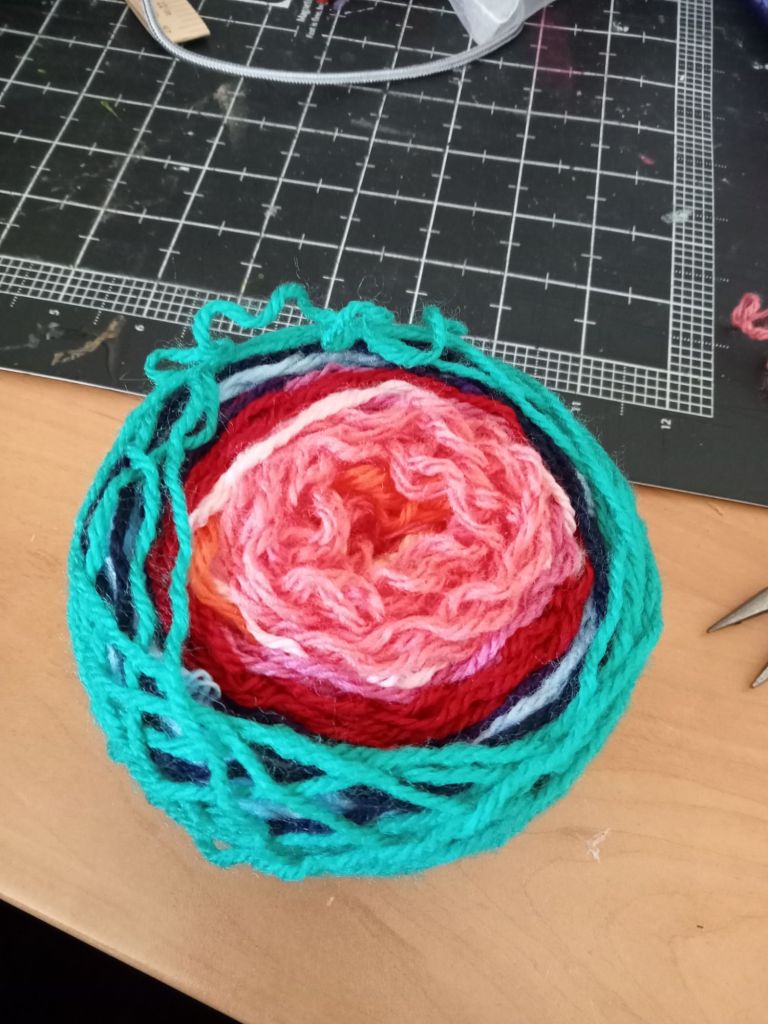
My first cake! So, get sorting this January, you will discover a whole wealth of reloved craft materials.
Confessions of a crafty butterfly
